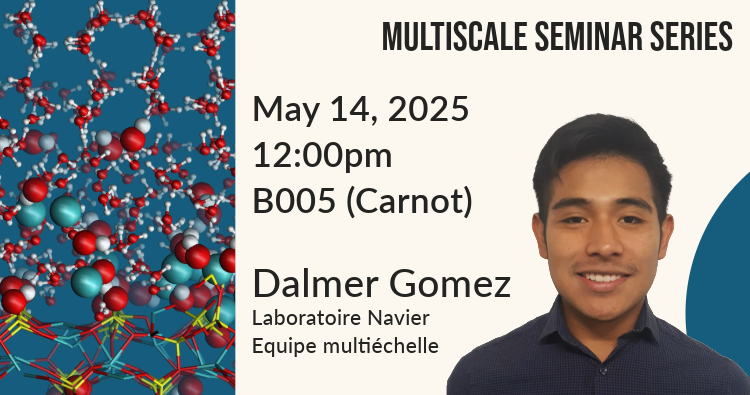
Séminaire Multiéchelle : Dalmer Gomez (Navier – Multiéchelle)
Nonlinear behavior of timber structure assemblies under static and dynamic loading
Abstract:
Different construction methods exist for mid and high-rise timber buildings; most of which use mechanical connections. One of them is the rod-type assembly, which consists of a plate and fasteners such as dowels or bolts. The fasteners transfer loads by shearing and embedding into the wood. The behavior of this type of assembly depends on the material and loading parameters. One of the most important being the wood properties.
When modeling this type of assembly under static loading, the heterogeneity of the wood material makes it difficult to measure key parameters like stiffness. In current standards, significant differences are observed between experimental mean stiffness and those predicted by the Eurocode 5; in addition, the variability of wood is not clearly taken into account. In this work, this variability is analyzed using a statistical approach based on experiments and using the beam on non-linear foundation for calculations. The idea is to move from an embedment model based on experiments to the response of a single dowel assembly. Only one-dowel assembly is analyzed because other important parameters affect the behavior of multi-dowel assemblies. The Monte Carlo method is used to analyze trends, variations in tangent stiffness, yielding force, and force-displacement behavior for single dowel assemblies. With experimental tests of one dowel assemblies, it is possible to observe the limits and capabilities of the range of variation obtained with the model.
Concerning the cyclic behavior of the assembly, dissipative phenomena is observed (hysteresis). The sources of non-linearity can be diverse: friction, permanent deformation on wood, cracking, non-linear response of wood under loading/unloading and the dowel yielding. Micro-tomography is employed to visualize the influence of these sources on the wood assembly. The resolution achieved allows for the observation of structural changes in the wood at each stage of cyclic loading. These tomographic observations highlight the importance of the initial wood structure beneath the rod and the influence of the rod’s surface geometry (smooth or threaded rod).
Short bio:
Dalmer Gomez is a PhD candidate at the Navier laboratory since October 2022, under the supervision of Gwendal Cumunel, Michel Bornert, Nicolas Peyret (Isae-supméca) and Thomas Catterou (FCBA). He graduated from INSA Lyon in civil engineering and is particularly interested in the mechanical behavior of construction materials. His research focuses on characterizing the behavior of wood construction assemblies under cyclic loading and modeling these assemblies for dynamic applications.

